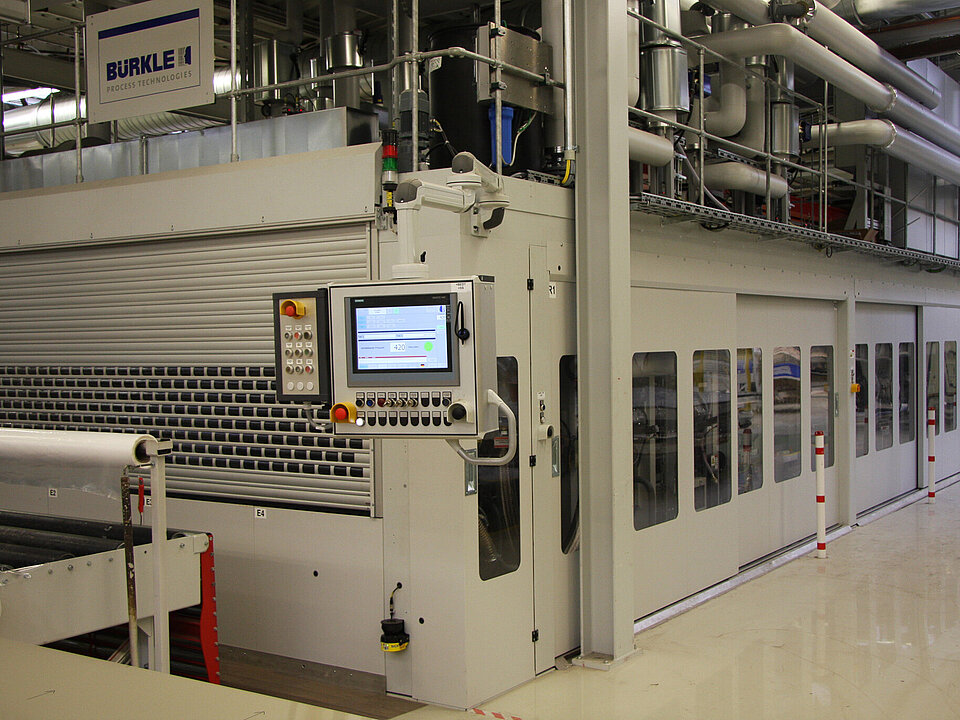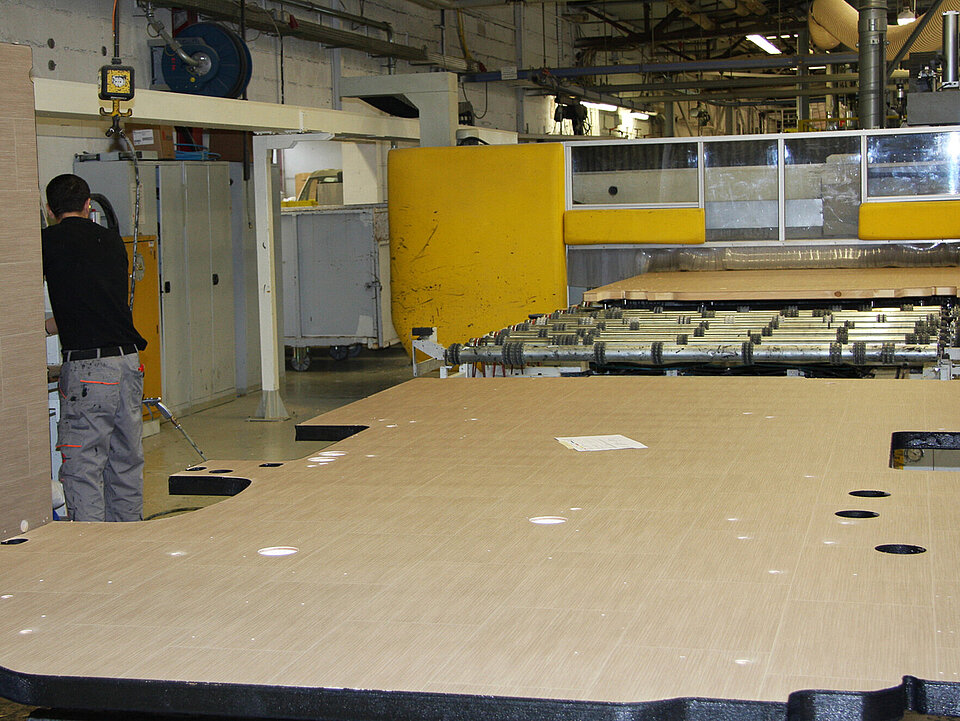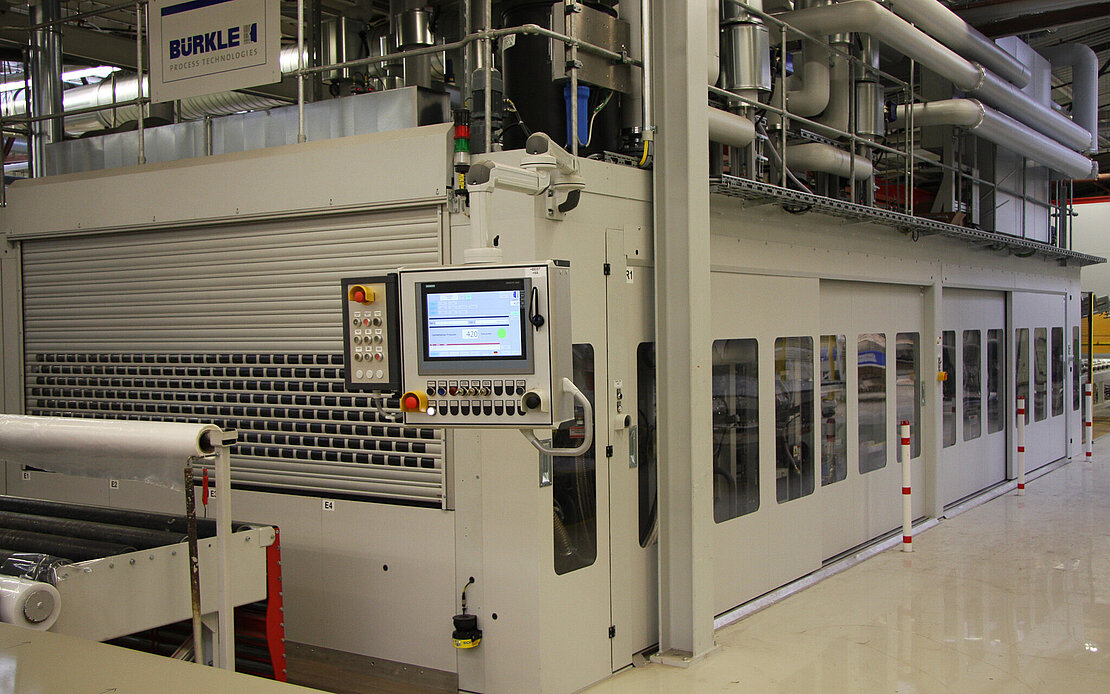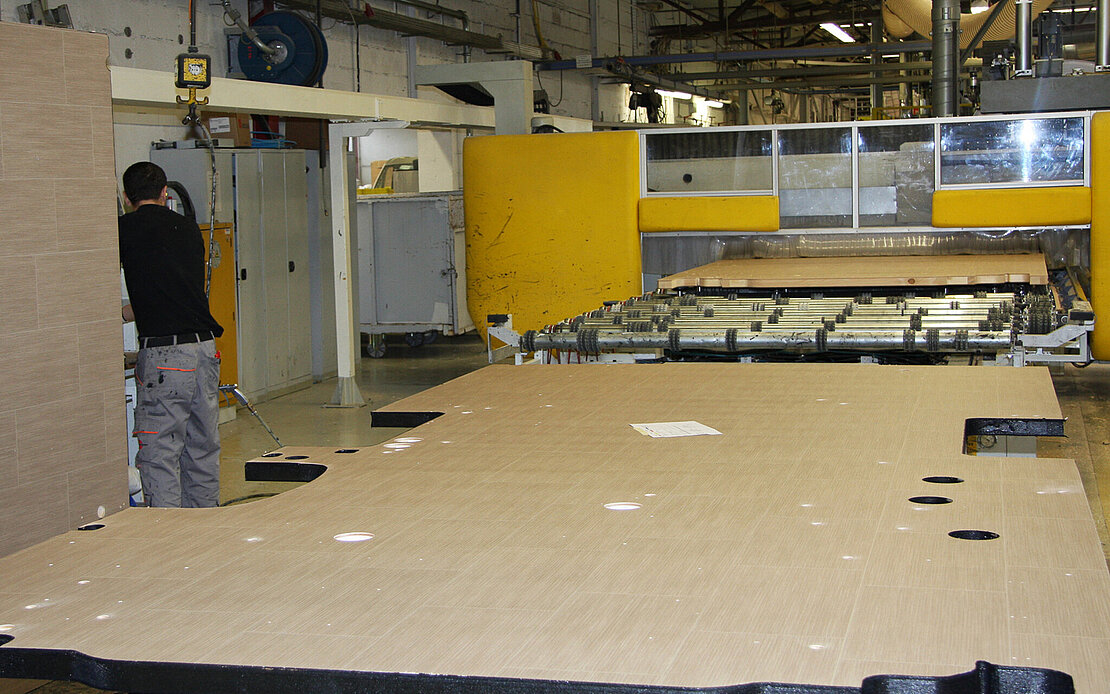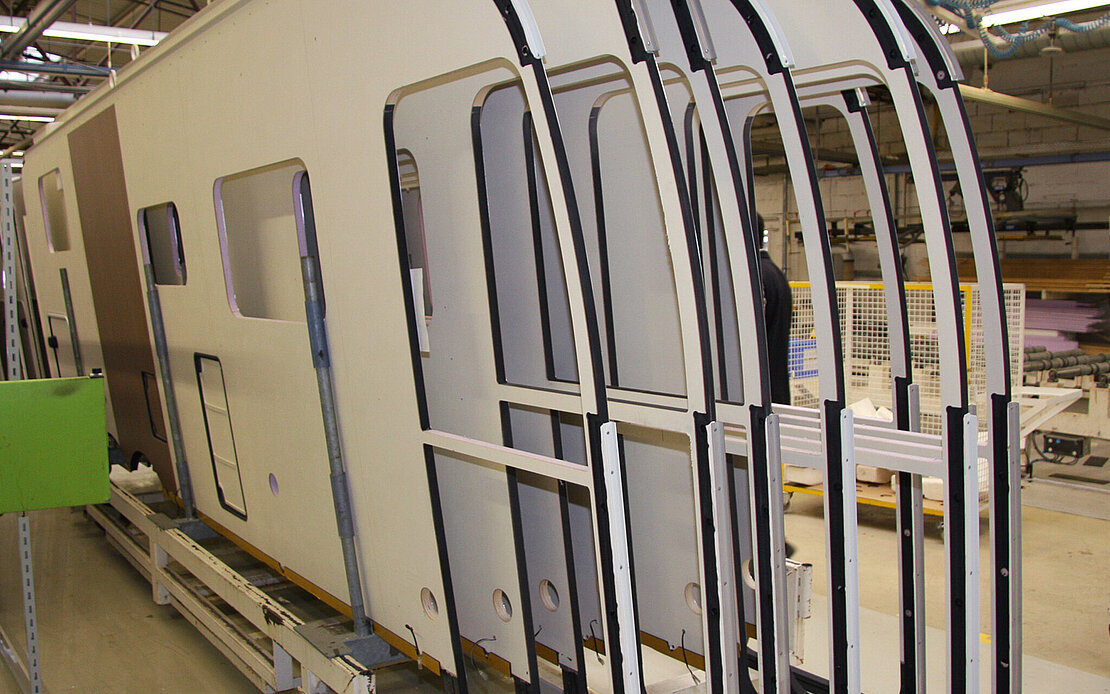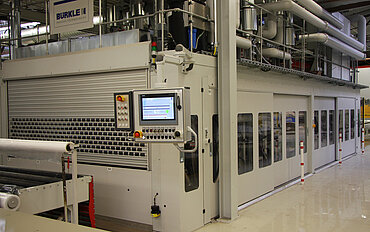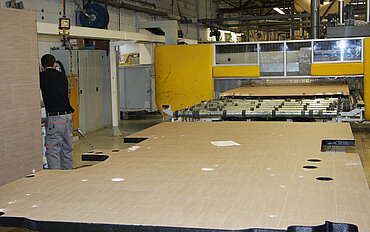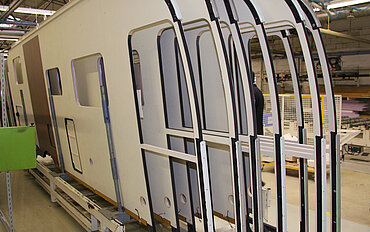If the consumer is increasingly saving up with retirement provisions in mind, yet hardly in case of his expenses for the holidays. Manufacturers of motorhomes and caravans directly benefit from this. However, before they can make the customers’ hearts beat faster, an extensive manufacturing process – which focuses on well-planned wall, ceiling and floor construction of the future road trip vehicle – is necessary. As a mechanical engineering company, Robert Bürkle GmbH, Freudenstadt, provides the company Bürstner with know-how and equipment for the manufacturing of these external sandwich elements.
Wanderlust and desire to travel is not solely a German phenomenon. Alongside air trips, holidays with one’s own or rented motorhomes or caravans continue to boom worldwide. The Caravanning Industry Association (CIVD) has published figures for October, according to which in 2014 in Germany alone over 17,200 caravans and about 25,700 motorhomes have been newly registered. In the uninterrupted growth the motorhome specialist Bürstner GmbH from Kehl am Rhein plays a major part.
Growth despite partially consolidated markets
Even though the market in the sphere of leisure time mobility especially in Europe is apparently consolidated, the company expects for 2014/2015 again a slight increase in turnover. This is substantially supported by the pleasant growth on the German market (+35 %). A total of 1,000 employees at two locations would like to generate about 280 million euros in sales in the coming main travel season – which is mirrored by the financial year. This is backed up by a planned production of 5,300 motorhomes and 2,400 caravans.
What sounds manageable in purely numerical terms – an average daily production amounting to 38 pieces (max. 47 units) is behind this – becomes very demanding at a closer look. As Bürstner is a full-range provider and offers with twelve different series of motorhomes and five caravan series plus various special and compact models a precisely accurate mobility solution for every budget and requirement.
For every customer his own motor caravan
But that‘s not all: even though, for example, in motorhomes the Fiat Ducato always forms the basis, the pre-cut parts, external dimensions and interior fittings are different in each individual series. Special requests come “on top”, and this way every vehicle and every trailer is individually planned and produced only after the receipt of order and precise specifications. In other words: we are talking about almost 8,000 produced “individual products” per year!
Bürstner, former large joinery, produces caravans since 1958. Generally, on the market of the technically upgraded motorhomes weighing up to 3.5 tons a distinction is made between alcove models (sleeping area up to above the cab), integrated (living space and cab without separation) and semi-integrated vehicles (original cab is included in the living space). In addition, Bürstner manufactures a combined series with a fold-down bed (Ixeo and Ixeo time) and the “Compact” range (Brevio and Travel Van).
Equipment like in the top-class flat
Based on the supplied chassis, with or without a cab a motorhome is completely newly built in the factory in Kehl. The substructure, electrical equipment and water supply, the built-in furniture – the production of components for this is carried out in the plant section in Alsatian Wissembourg – and the automotive body shell, even the upholstered elements are manufactured by the company itself or assembled from vendor parts. Whether fridge, television set, toilet with shower, cookers, or bicycle holders – equipment of the motorhomes assembled in two shifts seems to be unlimited.
In the area of the automotive body shell of motorhomes and caravans a lightweight construction plays an important role. For stabilisation purposes or for the window frames, light wood (spruce, lauan, poplar) is used, PUR elements form the frame of the walls, XPS or polystyrene foams form the padding. Floors have a comparable structure, but additionally are made weather-resistant by means of fibre-reinforced plastic material (GFK). The roof in turn is foam-filled, e.g., with and also additionally protected against hail by GFK.
The automotive body shell is Bürkle’s job
At Bürstner, the Bürkle systems are completely responsible for the production of the external sandwich elements. Two smaller presses produce roof elements, on the one hand, and floors, on the other hand. On the newest press line, however, side, front and rear walls are produced as well as – in case of particular need – floors and roofs.
The press of 2014 is a replacement investment, which is significantly faster and larger than the previous model. Besides a better heat transfer, another advantage of the Bürkle press is its integrated measuring system which precisely measures again and again the individual layers of the future sandwich elements before and during pressure build-up and holds them in position.
Walls produced as sandwiches in one pressing process
The new Bürkle system serves for the assembly of complete sandwich walls in which all necessary components and segments, all external aluminium covers ready-prepared for delivery and all plywood inner surfaces optionally coated with different patterns are glued together and grouted in one work step. Window and door openings are milled out later on a machining centre.
In case of blanks, finishing, pre-assembly and final assembly steps take place likewise later until the motorhome or the caravan gains its final external form. Both types of the recreation vehicles also show various side wall thicknesses due to different loads: caravan walls are between 24 and 30 mm thick, motorhomes have, in contrast, 30-mm thick side walls.
New downstroke press for wall elements with length of up to 10 m
The unique selling points of the Bürkle press which have counted for Bürstner in the contract award are to be found in the achieved product quality. The surface quality after the pressing process, the absolute parallelism of the internal and external wall parts in the sandwich up to the length of 9 m, the optically decisive flatness of the outer face and high cleanliness standards – e.g., via locking gates at the press inlet and outlet – have strongly convinced the investor.
The single-opening through-feed press designated as ODW 27105/20 can produce sandwich elements with a length of about 2.1 to 10.3 m and a width of 0.7 to 2.6 m at a pressing temperature of up to 80°C. The maximum workpiece thickness is 51 mm. These are ideal preconditions for the use in the wall production at Bürstner.
Well-planned work preparation is necessary
During workpiece preparation on a conveyor belt, at first, the wall top face is assembled to the frame size out of single veneer boards fixed with each other. After laying individual assembly auxiliary plates or supports the adhesive is applied by means of a mobile coating system. Now, the carrier material prepared in frame mode of construction – PUR frame plus padding made of foamed polymers – is put on the wall top face and also glued.
Finally, aluminium sheets are manually positioned as automotive body shell. The sensitive painted or powder-coated automotive body shell is finally provided with a protective film.
The ready-made sandwich element moves on an infeed conveyor to the press loading and into the downstroke press in a frame mode of construction. In the process, the temperature-resistant Teflon tape is permanently kept free from dirt by means of brush segments and an extraction system. The drive is frequency-controlled so that start-up and run-out is also carried out smoothly and precisely as the inching to the fine positioning. The infeed or the outfeed conveyor is precisely synchronised with loading.
Rationalisation push thanks to new Bürkle downstroke press
After the pressing process and controlled pressure build-up as well as short waiting time the finished sandwich element comes out, the protective film is removed. Finally, the elements are positioned on a roller track and turned and move into a machining centre. After a certain conditioning time and further processing, the side walls enter eventually the vehicle assembly where their installation takes place.
With a new Bürkle press, additional investments and comprehensive development work a considerable model initiative was possible at Bürstner. This way, the market leadership in semi-integrated motorhomes should be greatly expanded, the company would like to realise the same for the price-sensitive medium class in case of camper vans and trailers.
Bürstner – in the self-image a German-French company
The customers in different sales markets – along with traditional markets Germany and France entire Europe – will gratefully accept new models and product features. On the other side, the employees originating from the joint community Kehl (Ortenau) which has 30,000 inhabitants and from the neighbouring Strasbourg (Alsace) are very pleased about the successful company development. Young people from France and Baden finding a training position in five different apprenticeship trades are also proud. This way good, sincere “European policy” is done at Bürstner not only by words, but also by daily work.
